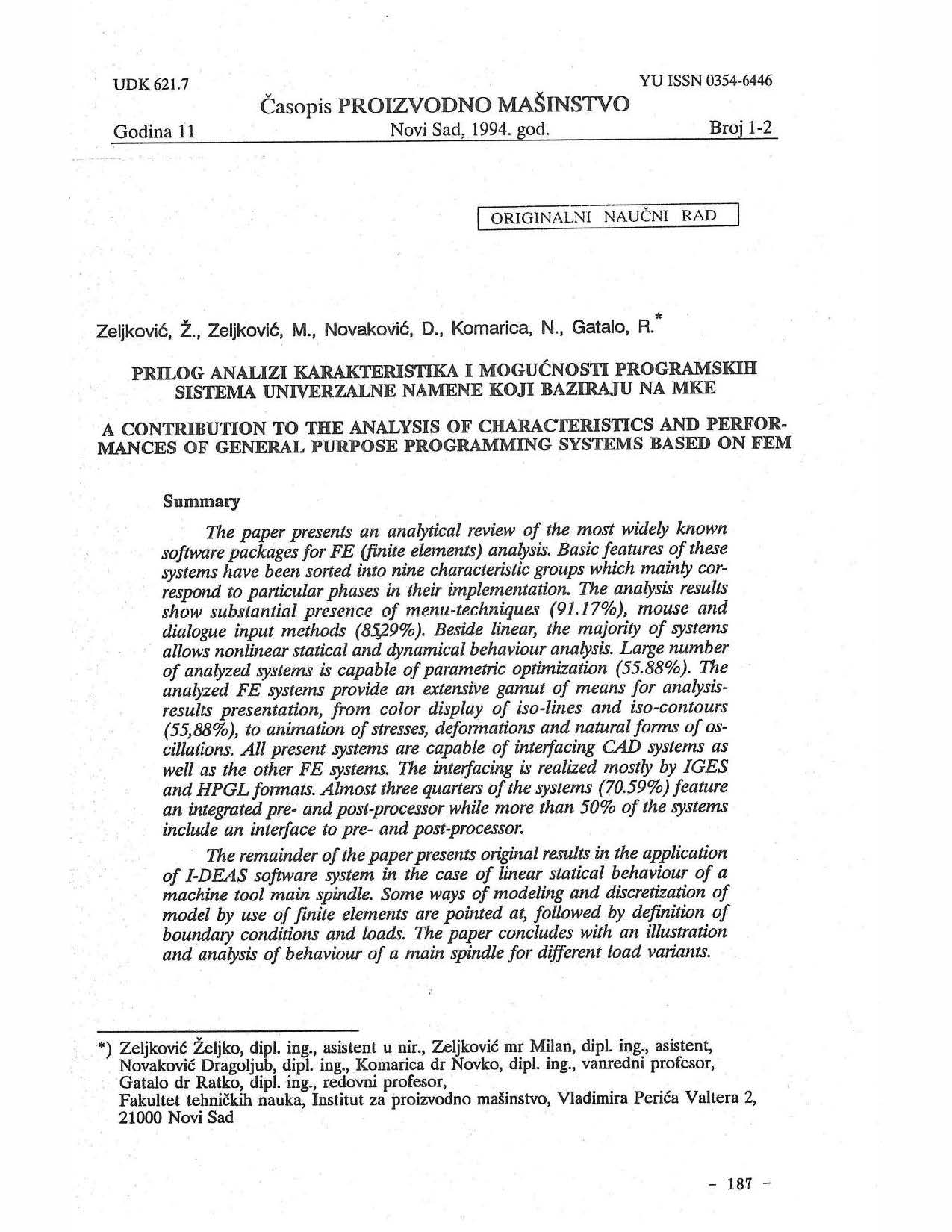A contribution to the analysis of characteristics and performances of general purpose programming systems eased on FEM

Published 1994-12-01
abstract views: 18 // FULL TEXT ARTICLE (PDF): 5
Keywords
- software,
- finite element
How to Cite
Copyright (c) 2023 Journal of Production Engineering

This work is licensed under a Creative Commons Attribution 4.0 International License.
Abstract
The paper provides an analytical review of widely recognized software packages for finite element (FE) analysis. It categorizes the fundamental features of these systems into nine characteristic groups, corresponding primarily to specific phases in their implementation. The analysis reveals a significant prevalence of menu-based techniques (91.17%) and methods for mouse and dialogue input (85.29%). In addition to linear analysis, the majority of these systems support nonlinear static and dynamic behavior analysis. A considerable portion of the examined systems is capable of parametric optimization (55.88%). These FE systems offer a wide array of tools for presenting analysis results, ranging from displaying iso-lines and iso-contours in color (55.88%) to animating stress, deformation, and natural oscillation patterns. All current systems are equipped to interface with CAD systems and other FE systems, typically using IGES and HPGL formats. Approximately 70.59% of the systems feature an integrated pre- and post-processor, with over 50% of them providing an interface to a pre- and post-processor. The remainder of the paper introduces original findings related to the application of the I-DEAS software system in the context of the linear static behavior of a machine tool's main spindle. It discusses various modeling approaches, discretization with finite elements, and the definition of boundary conditions and loads. The paper concludes with an illustration and analysis of the main spindle's behavior under different load variations.

